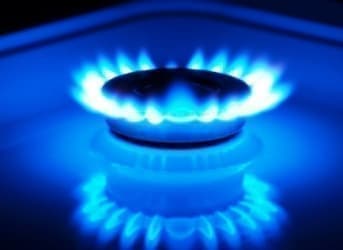The natural gas boom and climate change that saw a milder winter and lower demand for propane and resultant over-supply have all helped to bring down propane prices, but the average pocketbook is not likely to benefit much from this without a concerted effort that recognizes the negotiating power of a unified consumer base.
Where propane is concerned, the American consumer has a massive power base around which to organize. Propane, a by-product of natural gas processing and petroleum refining, boasts some 14,300,000 residential users in the United States and an estimated 6,880,000 households heat with propane. To that one can add another 47,000,000 American grills fired up with propane during the summer months.
This past winter was warmer than usual in North America, resulting in the largest decline in propane demand among US consumers in years and an estimated 20 million bbl surplus which will affect markets and pricing for the rest of 2012. What experts refer to as “heating-degree” days – the critical winter days when consumers use propane to heat their homes – were up to 33% fewer in December 2011 and January 2012 than in the previous year for customers in America’s upper Midwest and Northeast.
The propane market is slowest from May through July in terms of consumption and restocking sales to smaller retailers and consumers. This is when the prices are at their lowest, and also when wholesalers and larger retailers swarm on supplies to fill their inventory for the subsequent winter’s demand.
This year has been different, however. Lower demand over the “critical” heating months and the resultant oversupply has reduced incentives for wholesalers and larger retailers to rush on the cheaper May-July prices to restock their inventories. Inventories are already stocked.
But this is the supply-side of the equation. What consumers want to know is how lower prices are trickling down to affect their own massive propane bills. If you are already a consumer of propane, you are not likely to benefit from lower prices unless you demand such.
Propane prices now will be based on the price when wholesalers bought most of their stock in May-July 2011, which they have not managed to offload, and more nominally on any new stock acquired in May-July 2012. The consumer’s price is therefore not reflected in the current price of propane before it reaches the wholesaler.
So how can the consumer benefit more from falling prices? By harnessing the power of the “group consumer” or the “community consumer”. Banding together, consumers can approach propane distributors for discounted prices. The consumer benefits, and the retailer can’t resist the temptation of the additional clients the group brings to the table.
Facilitating such an effort requires a more informed consumer capable of leading the group—someone who recognizes that regular customers, especially the elderly who are afraid to rock the boat and are unaware of their options, are rarely offered lower prices even when they are available.
The informed consumer switches providers regularly and bargains for the best price, taking their business elsewhere if the retailer refuses to negotiate. “Consumer groups” bring neighbourhoods, churches and other organizations together to demand better pricing as a unit, and they usually get what they demand.
I spoke with one such “consumer group” in rural mid-Michigan, where the majority of people heat their homes with propane, and where few can absorb the costs of keeping their propane tanks filled.
“It’s simple divide and conquer,” according to William Tracy, a retired school teacher from Barryton, Michigan, and the organizer of a local consumer’s group. “The only way consumers are going to get a good price [on propane] is if they end the division and unite together to demand lower prices that are available. We attempt to inform the local community about their pricing options and the power of unity, then we descend on the provider as a group and we leave with a discount.”
ADVERTISEMENT
“Retailers take advantage of loyalty in customers, especially the elderly. Prices are falling for propane--and those who ask, receive”.
The entire US petrochemicals industry stands at the dawn of what should be a long-term upturn in its fortunes. The shale boom has led to a surge in production of natural gas liquids (NGLs) such as ethane and propane. That has sent the price of NGLs tumbling. That has created a large cost advantage for US chemicals manufacturers that use these liquids as a feedstock when compared to rivals in Europe and Asia that use naphtha and other products derived from crude oil.
By. Charles Kennedy


















